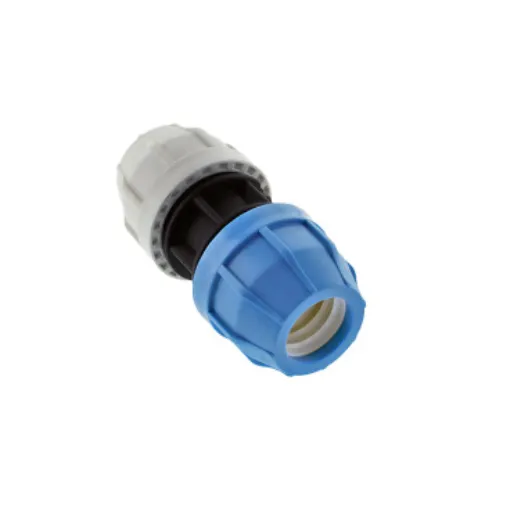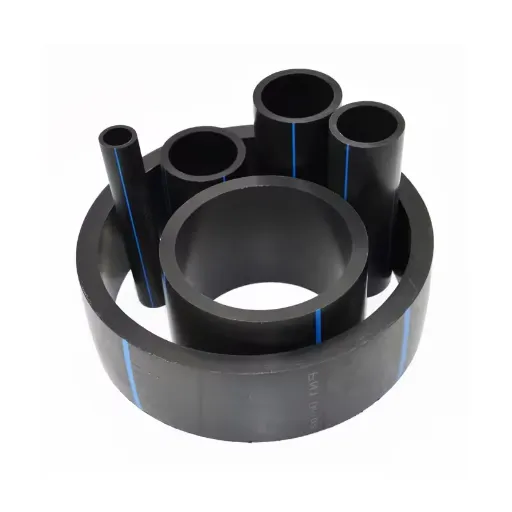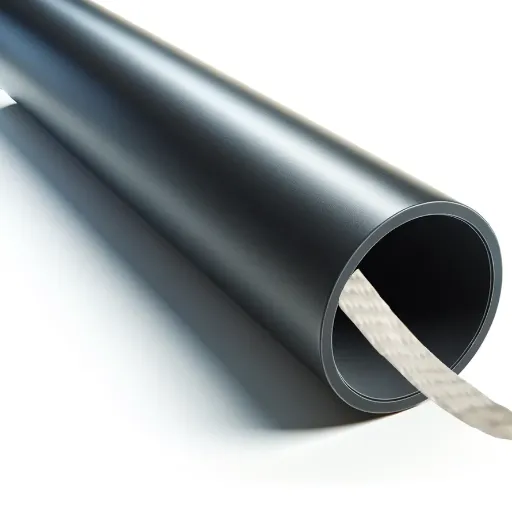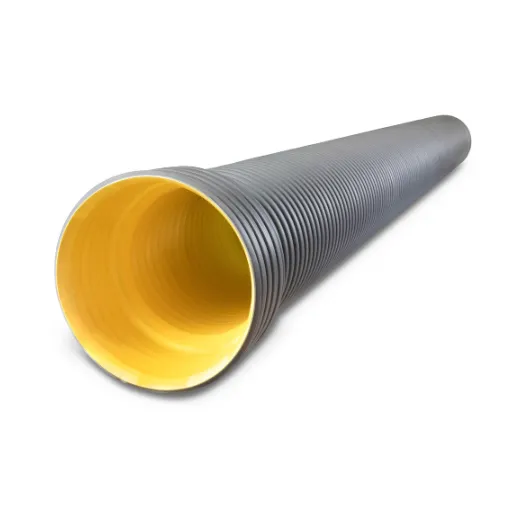High-Density Polyethylene pipe to a Polyvinyl Chloride pipe is an important joining technique in plumbing, irrigation, or even industrial projects. These two materials are marketed as durable and versatile but pose many problems when it comes to joining owing to their variable properties. Whether you are a hobbyist or a professional plumber, you must know the procedure and viable tools or fittings to be used to make a tight and permanent connection. This guide will make the process simple and outline the steps and some tips on merging HDPE and PVC pipes. At the end of this article, you will be able to choose the best method for your particular general situation.
Tools and Materials Required for Connection
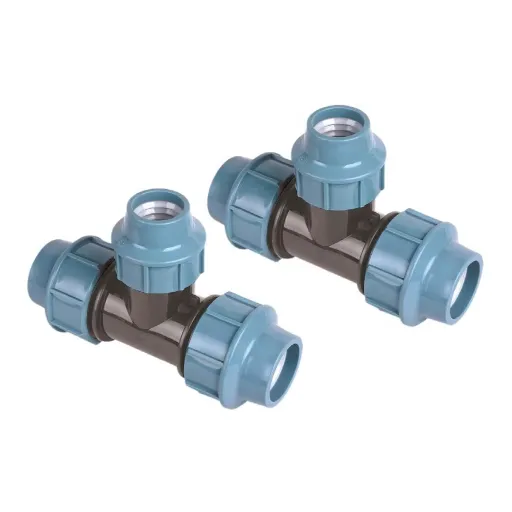
Essential Tools for Joining HDPE and PVC
For a strong and leak-proof connection, HDPE and PVC pipes require a set of specific tools and materials. They are as follows:
Pipe Cutter or Saw
A clean and accurate cut is essential for HDPE and PVC pipes, achieved by using a very good pipe cutter. The smooth edges are necessary for the correct alignment and fit.
Sandpaper or Deburring Tool
After cutting the pipes, smoothen the edges of the PVC pipe using either sandpaper or a deburring tool. This will zip away any roughness that may obstruct the seal or joint.
Compression Fittings or Transition Couplings
Specialized fittings are designed for the effective connection of HDPE to PVC. They usually have gaskets and threads that ensure a tight seal and accommodate slight variations between pipe materials.
Wrench or Pliers
A wrench or pliers is used to tighten the compression-fittings securely to withstand pressure.
Measuring Tape and Marker
Accurate measurements are necessary to obtain the correct length of pipes. It is important to have a marker for making precise guidelines for cuts and installation.
PVC Cleaner and Solvent Cement
If your project requires connections with traditional PVC, a PVC cleaner and solvent cement will deliver the strength and permanence of the weld.
💡 Important Note: With the preparation of these tools and materials, joining HDPE and PVC pipes is simplified and efficient. Whether it’s plumbing or irrigation, this workable toolkit guarantees a permanent solution. Always read and follow specific instructions supplied with the fittings or material to ensure proper use and compatibility.
Materials Needed for Effective Connections
A sincere preparation of tools and materials is necessary for creating effective connections between HDPE and PVC pipes. The following is a comprehensive list of all the things that you might need:
- HDPE and PVC Pipes – The pipes should be cleaned, undamaged, and compatible to the particular project. It is important to select pipes that suit your application in size and grade.
- Connector or Transition Fittings – In order to achieve a secure joint between HDPE and PVC pipes, special fittings are required. They may be mechanical couplings, compression fittings, or flange adapters, depending on the need.
- PVC Cleaner and Solvent Cement – The cleaner and cement must be used to achieve a strong, permanent bond when dealing with PVC pipes. Always check for recommended products for your specific case.
- Pipe Cutter or Saw – Any tool that produces clean and precise cuts for proper pipe alignment will do. Do not install pipes with rough or uneven edges.
- Primer or Adhesive for HDPE – If mechanical fittings are not used, then you may require an adhesive or preparation method specific to HDPE.
- Safety Gear – Some basic protective equipment, such as gloves and safety goggles, assures a safe working environment while handling tools and chemicals.
✓ Pro Tip: The joining process is made smoother once these materials are in place. By being properly prepared, one can even save on delays or errors during project execution.
Choosing the Right Pipe Fittings
Choosing the right pipe fittings through product selection shall therefore assure the durability and working efficiency of your piping system. First, identify the purpose of the system-whether it is working with water, gas, chemicals, or other materials. Depending upon the type of material and pressure rating befitting its purpose, the fitting must be selected accordingly to ensure the safety of the system. Thus, PVC fittings are commonly used for water systems, whereas metal fittings such as stainless steel and brass are best suited to high-pressure or corrosive conditions.
Then, check out the sizes and whether they fit well with the pipes being used. Using wrong sizes may lead to leaks or system failure. The basis for proper fitting shall be against the diameter, type of thread, and the method of connection of the pipes. For HDPE pipes, they should be paired with compatible compression or electrofusion fittings, which provide a strong and reliable joint.
Finally, think about your system’s requirements for the long haul. Durability, corrosion resistance, and maintenance are things you’ll assess before making your choice. If the system encounters hostile conditions, such as severe temperature or chemical exposure, then choose those fittings that resist the premature effects of such end-use conditions. Always consider the relevant codes and standards or manufacturer’s instructions for ensuring reliable performance. Quality fittings in relation to the project carry a lot of weight toward contributing to its longevity and effectiveness.
Connection Methods of HDPE to PVC Pipe

Using Couplings for HDPE to PVC Connections
Couplings provide a fast and straightforward method for connecting HDPE to PVC pipes. These fitting act against the disparity in material properties while ensuring a secure and leak-proof connection. Better results are obtained if the couplings are really the ones made to join dissimilar materials. Due to their flexibility and reliability, compression couplings and transition couplings are the ones most often considered for connecting HDPE to PVC.
Before installing the pipes and coupling, make sure that the HDPE and PVC pipes are clean and free from dust. Modern couplings come equipped with an advanced sealing system comprising of rubber gaskets or O-rings, thereby creating a water-tight seal. This enhanced design further reduces leakage and provides better performance and durability to the pipe system. Couplings with stainless steel bands or clamps are further strengthened and especially suitable for applications involving high pressure or stress.
Coupling selection depends on the pipe size, pressure rating, and environmental considerations. For projects exposed to adverse weather conditions or installations under the ground, a heavy-duty coupling may have to be employed to resist external forces. Validating against the manufacturers’ specifications and industry-based advisories will ensure the compatibility and durability of the system. Efficient installation and periodical maintenance will allow for efficiency in HDPE and PVC pipeline system coupling installation.
Bonding with Glue: Steps and Precautions
When it comes to bonding HDPE to PVC with glue, one must follow a set procedure to guarantee the strength and reliability of the connection. Some steps and precautions must be adhered to:
Surface Preparation
Cleaning dirt, grease, or other contaminants from the surface of both HDPE and PVC is the very first step. Degreasing agents or use of isopropyl alcohol is good to make a surface ready for bonding. A little sanding on the surfaces also enhances adhesion.
Right Adhesive Choice
Not all adhesives work for HDPE and PVC. Choose an adhesive made for thermoplastics, such as those based on polyurethane or epoxies that mention the HDPE and PVC compatibility.
Apply the Primer if Necessary
Some adhesives call for the application of a primer to better the bonding. Always pay heed to the instructions as to whether this is applicable or not.
Apply Adhesive Evenly
Spread the glue on both surfaces in an even layer so that the contact is as good as possible and to avoid the formation of weak points. Follow any recommendations for open time of the adhesive manufacturer so that the bonding conditions are correct.
Secure the Bond
Place the materials in their correct alignment and apply equal pressure to hold the surfaces together. The use of clamps or weights is recommended in order to maintain pressure throughout the curing process.
Curing Time
Let the bond remain undisturbed for the amount of time required by the adhesive manufacturer and avoid stressing the assembly so that the bond may develop maximum strength.
✓ Summary: By employing these steps and precautions, one can produce a really tough and reliable bond joining HDPE and PVC materials, duly factoring in the longevity of its entire system.
Alternative Connection Techniques
Working with HDPE and PVC, alternative connection techniques can provide solutions to specific applications or where bonding methods are not applicable. These techniques typically emphasize mechanical fastening, special-purpose fittings, or advanced welding methods.
Mechanical Fasteners
It practical to connect HDPE and PVC using screws, bolts, or clamps. This type of fastener creates a following bond that is adjustable, needing no adhesive. For best corrosion resistance and wear qualities, fasteners made of stainless steel or other corrosion-resistant metals are recommended, so in various environments, this remains as strong as before.
Flanged Connection
Flanged fittings can be assembled and disassembled easily, thus considered an excellent choice for systems that need occasional maintenance. Typically, a gasket is placed between the flanges to ensure a tight seal that prevents leaks and guarantees a leak-proof and trustworthy operation.
Thermal Welding Techniques
If a permanent bond is to be made, then thermal welding methods like butt fusion or electrofusion might be considered. In these methods, depending on the raw material of plastics, the materials are heated at specified temperature and then fused-without leaving any trace of the joining. This method needs specialized equipment and trained personnel for welds but creates the highest-grade durable and leak-proof joint.
Threaded Adapters and Couplings
Threaded fittings are versatile joining methods for HDPE and PVC materials. They come in different sizes and configurations to connect pipe systems that may vary in size. Selecting the most appropriate fitting meets the requirements of the system in question and optimizes functionality and reliability.
💡 Key Takeaway: The above methods add flexibility to your project while maintaining the structural integrity of the final assembly. Customizing them for your application’s needs will ensure the materials are joined with exactness and reliability through either welding HDPE or bonding PVC.
Step-by-Step Instructions for Connecting HDPE and PVC Pipes

Preparing the Pipes for Connection
Gather all Necessary Tools and Materials
Start by collecting all the necessary tools and materials. The usual items required include a measuring tape, pipe cutter or saw, sandpaper or deburring tool, cleaning cloths, and the proper type of adhesive or mechanical joining apparatus specified for HDPE and PVC. All tools should be cleaned and free of faults to avoid compromising the connection.
Measure and Mark the Pipes
Take accurate measurement for the length of pipe needed for the connection and mark the pipe with a visible yet removable marker. Double-check your measurements to make sure everything fits well together so as to avoid the possibility of leaking or improper alignment.
Cut the Pipes to Size
Cut to the desired lengths both pipes with a pipe cutter or saw. Keep the pipe ends clean and straight in order to align well when joining.
Inspect and Prepare Ends
Examine the pipe ends; prevent burrs or jagged edges from forming. Use sandpaper or a deburring tool to smoothen these burrs for a tight and secure connection.
Clean the Pipe Surfaces
Wipe all pipe exteriors and connectors with a dry cloth to remove any traces of dust or grease. More critical is using an alcohol-based cleaner to ensure cleanliness of the surfaces, as any residue can obstruct the action of gluing or sealing.
✓ Foundation Set: By carefully following these processes, you lay the foundation for the secure and durable bonding of HDPE pipe with PVC pipe.
How to Use PVC Fittings with HDPE
The major point to consider in combining PVC fittings with HDPE pipes is to have proper planning and best techniques for ensuring a dependable connection. Follow these steps:
Select the Right Fittings
Choose PVC fittings that are designed for transition between PVC pipes and HDPE pipes. Usually, these are threaded or have special adapters to deal with differences in material properties.
Prepare the Pipes
Cut both HDPE and PVC pipes to dimension using the correct pipe cutter appropriate for the respective materials. Be sure the cuts are straight and smooth to ensure good alignment.
Use Compatible Transition Couplings
Use a transition coupling or mechanical fitting that can join HDPE with PVC. These couplings usually have compression ends for the HDPE pipe and threaded or socket ends for the PVC pipe. Proceed by installing according to the manufacturer’s instructions.
Heat Fusion for HDPE
Perform heat fusion on the HDPE side if needed in order to fabricate fittings or to connect any additional HDPE pipe lengths. Heat fusion makes a smooth and waterproof joint for HDPE pipe and, unlike PVC, should remain strong on the HDPE side.
Secure the Connection
Complete installation by gently tightening the fittings using the wrenches or tools suggested in the manufacturer’s instructions, as overtightening can result in inefficient sealing or even damage to the pipes.
Test the Connection
The system should be pressure-tested after installation to ensure the presence or absence of leaks. Check the joint area carefully-that is, the area where the PVC fitting joins the HDPE pipe. It must be ensured that water is not seeping before the system is put into operation.
💡 Important: The use of appropriate materials keeps the above-mentioned procedure in sight and ensures that PVC fittings can be reliably joined to HDPE pipes. An amalgamation of the correct tools and a keen eye for detail will go a long way in preventing system failures later on.
Finalizing the Connection and Testing for Leaks
It is important that, upon the creation of the system, the connection is finalized and leakage tests are conducted to ensure good performance and durability. First, examine visually all joints, connections, and fittings. Pay extra attention to the interface areas between PVC and HDPE materials as the improper bonding of these interfaces makes them vulnerable. Check to ensure that fittings are firmly seated and that any sealing material, such as thread tapes or adhesives, is applied properly except where concrete grouting has to be considered. For thorough inspection, clean the joints of any dirt or glue which might hide issues.
Once all installations have been checked visually, the system may then be pressurized slowly up to the recommended operating pressure by the manufacturer. During this process, one should be vigilant; any presence of water seepage or dripping, or an obvious weak joint should be considered as an immediate basis for rejection. For more durable pipe systems, slight pressurizing above the normal operating pressure for a short time should be contemplated to simulate extreme conditions and to verify the connection integrity. Keep the pressure gauge showing proud and steady; if the pressure dips while the system remains still, it could mean there is a hidden leak.
The advent of technology helped integrate leak detection sensors and pressure monitoring devices to enable more accurate testing processes for larger or complex systems. These devices can collect real-time data and issue alerts pinpointing almost inconsequential leaks that cannot be seen with the naked eye. Hence, through such precautionary measures and leveraging technology, the system’s reliability can be secured with fewer chances of future failures. Thorough testing and fine details considered at this stage add to the long life and efficiency of the PVC and HDPE connection.
Troubleshooting Common Issues

Identifying and Fixing Leakage Problems
In general, leakages in PVC and HDPE joints could be caused by factors such as inappropriate jointing, defects in materials, or external environmental conditions such as excessive pressures or temperature fluctuations. For the identification of leaks, one must check for water seepage on walls or faces of the joints or fittings or any visible cracks or wear. For very small leaking joints, ultrasonic leak detectors, infrared cameras, or pressure testing equipment might be more helpful in tracing the problem spot.
Once a leakage is found, attending to it immediately is utmost. Minor PVC pipe leakage usually requires solvent cement or even repair tapes. But an HDPE pipe will demand welding sealing techniques such as butt fusion or electrofusion for strong and leak-proof repairs. Inspect the good condition of the surrounding area to make sure there is no extra cause of leakage like misaligned joints or a degraded sealing component.
Maintenance can help prevent leaks in a pipeline system. Periodic inspections, installing according to manufacturers’ specifications, and ensuring good-quality materials are used will help prevent problems down the line. When combined with diagnostic techniques, maintenance allows one to promptly diagnose and fix a leakage problem, thus reducing downtime and improving the overall system life.
Addressing Misalignment in Pipe Connections
Pipe misalignment is one of the most common issues faced and something that can give rise to problems such as mechanical stress, leaks, or reduced efficiency of a system. Pipes having never been aligned properly during installation, may have been installed by forcible joining, or may have become misaligned over time due to various external conditions such as soil movement or thermal expansion. The external pressure exerted on the connection points where pipes are misaligned is irregular, causing failure at these points to a greater extent. It is necessary that these problems are caught in time to make sure the system retains its integrity and not pay much later for repairs.
Another means of alleviating misalignment is to purchase flexible couplings or systems that allow slight misalignment to occur. These couplings can interchange vibrations and tolerate slight changes in direction, thereby considerably reducing the stress at the pipe joints. Furthermore, new generation alignment tools are now available, which allow for the most minute of measurements to be undertaken at installation and during maintenance, thus ensuring the technician uses a correct position. Alongside monitoring systems that work in real-time, these provide permanent data to pre-warn and correct misalignment as it begins.
Regular maintenance works along with inspections to address any misalignment issues. Scheduled inspections equipped with modern imaging technologies-super ultrasonic testing or laser scanning-make it possible to discover any concealed structural weaknesses or alterations concerning pipe alignment. If we combine these technologies with predictive analytics, insightful information on repetitive patterns in misalignments will be made possible so that better designs can be developed for higher stability. In addition, staff training should be conducted to allow them first-hand knowledge of installation and maintenance best practices, so that alignment standards may continue to be enforced, allowing for long-term system reliability and performance standards.
What to Do if the Bond Fails
The moment a bond fails in a product or material, the matter has to be addressed quickly to avoid further discomfort. The extent and cause of the failure should first be determined. An inspection must ascertain whether the failure was due to environmental factors, material fatigue, improper installation, or operational stresses. Advanced diagnostic equipment such as non-destructive testing (NDT) may be employed in tracing the exact location and nature of failure without causing more damage.
Then, depending on the cause of failure, an appropriate remedial action may be chosen. Temporary measures may be applied experimentally, such as sealants or clamps, until it is secured against immediate risk and hazard. Wherever possible, the repair shall be carried out in compliance with the original design specifications and use good-quality materials to prevent a recurrence of failure. In some instances, a manufacturer or design engineer may present a good recommendation.
Prevention can be engineered by installing routine maintenance and checks and with technology application, such as IoT-based monitoring systems. Such systems provide real-time data for a particular parameter of interest, hence detecting any potential problems at the early stage. To document the failure and repair technique is very useful in improving future designs and policies, thereby minimizing the risk of a similar problem.
Safety Considerations When Connecting Pipes
Personal Protective Equipment (PPE) Recommendations
When aligning pipes, safeguarding workers’ health and preventing potential accidents should always be paramount. At minimum, safety gloves against sharp edges, abrasions, or chemicals from the working environment should be strictly adhered to. Steel-toe boots could protect workers’ feet during the pipe installation process from heavy equipment and falling objects. Safety goggles or face shields must be ensured for eye protection against debris, pressurized fluids, or sparks from cutting or welding activities.
A respiratory protection bottleneck arises whenever an environment exposes a worker to noxious fumes, dust, or other airborne contaminants. The nature of the work controls the type of respirator to be worn, ensuring that air quality parameters are maintained. Application-type jobs employing chemical-type sealants, adhesives, or cleaners should mandatorily have PPE, guarding in the first place against inhalation toxins and shielding any skin exposed from chemical burns or irritation. Workers need to be instructed in the fit and use of such equipment for the greatest protection.
Lastly, high-visibility clothing is an essential safety measure while pipe-connection activities are carried out in areas shared with heavy equipment or near active roadways. This keeps workers visible in front of operators or drivers, preventing collision or accidents from occurring. Employers should softly enforce procedures regarding PPE maintenance and inspection to guarantee one’s operational reliability, as well as put emphasis on training resources, allowing workers to comprehend the safety-critical reasons behind the use of every PPE. Proper application of all PPE personnel protection aspects in conjunction with their safety awareness greatly helps to minimize hazards for both the personnel and the overall operational flow.
Safe Handling of Tools and Materials
I generally abide by safety guidelines. I see that safety measures are followed at all times; for example, inspection of tools for any damage or wear before use is always undertaken, and certain types of equipment are only operated if trained in their safe usage. By working in an environment undistracted, I have maximum control over the tools and materials, and this definitely guarantees my safety and that of the people around me.
With good safety practices, the proper tools are employed, and their safe use according to manufacturers is always considered. Tools are returned to safe, designated storage areas following use, and the order of the workspace is always maintained by me. Such a well-kept environment will provide added safety, along with increased work efficiency, in that misplaced tools will not cause accidents due to improper storage.
Last but not least, I recognize PPE as essential when it concerns materials posing risk such as sharp edges, heavy loads, or hazardous substances. Similar gloves provide protection from expected or even unforeseen injuries, so I put them on. I always keep abreast of safety procedures through constant training, which strengthens my skills in the proper handling of tools and materials.
Environmental Considerations During Installation
Environmental sustainability is a front-and-center feature to latch onto when embarking on any installation. With careful planning and installation, an application or system can have a dampened effect on the environment and can be eco-conscious. Waste reduction ought to be a primary concern. Ordering the correct amount of materials and using them efficiently permits avoidance of surplus. In addition, one should consider recycling leftover materials rather than discarding them in landfills for some degree of active waste management and conservation.
Renewable energy is also one of those aspects to handle during installations. Wherever feasible, preference should be given to equipment and tools that consume less power so that overall electricity consumption comes down. Provided by solar power in some particular cases are solar tools or solar energy. An additional trick is to plan installations with maximum sunlight so that electricity usage can be kept minimum. The smallest changes do wonders for the carbon footprint of any project.
Lastly, the selection of environmentally friendly materials constitutes an important part of environmentally responsible installation procedures. Choosing materials that come from renewable sources, are non-toxic, and have minimal impact on the environment helps keep the process sustainable during and after the completion of the project. For example, paint with low levels of volatile organic compounds (VOC) or fittings from recycled materials reduces harm to the environment. In conserving the ecosystem, they have also become valorized with industry trends of green solution. The longer recreational balance between the project objectives and environmental concern is a guiding principle to sustainability.
References
- Evaluation of HDPE and PVC Pipes Used for Cross-Drains in Highway Construction
This study evaluates the use of HDPE and PVC pipes in construction, including procedures for connecting these materials. - Study on the Mechanical Responses of Plastic Pipes Made of High-Density Polyethylene (HDPE) in Water Supply Network
This research focuses on the mechanical properties of HDPE pipes and their applications in water supply systems, providing insights into compatibility with PVC. - Volatile Organic Components Migrating from Plastic Pipes (HDPE, PEX, and PVC) into Drinking Water
This article examines the interaction of HDPE and PVC pipes in water systems, including considerations for material compatibility. - Case Studies on the Use of HDPE Pipe for Municipal and Industrial Projects in North America
This paper provides case studies on HDPE pipe usage, including its integration with other materials like PVC in various projects. - Plastic Piping Systems
This book offers a comprehensive overview of plastic piping systems, including guidelines for connecting HDPE and PVC pipes.
Frequently Asked Questions (FAQ)
Q: What are the common types of methods by which HDPE pipe can be connected to PVC pipe?
A: The ways to connect HDPE pipe to PVC pipe include mechanical fittings, electrofusion, and flange connection. Mechanical connections usually have couplers and clamps to hold the pipes together, while electrofusion uses heating elements that melt the ends of the polyethylene pipe to join them. Flange connections provide a sturdier connection but require extra hardware such as bolts and nuts.
Q: Can I glue HDPE pipe to PVC pipe?
A: As a glue cannot bond HDPE pipe to PVC pipe due to their differing chemical compositions, it would be recommended in filled seldom only. The best is to use appropriate fittings and connectors, either couplers or mechanical fittings, to achieve secure and leak-proof joining.
Q: What fittings are inherently required for connecting HDPE and PVC pipes?
A: In connecting HDPE pipes to PVC pipes, you need special fittings such as couplers and adapters to facilitate the transition from high-density polyethylene to polyvinyl chloride piping. These fittings will give the proper sealing and compatibilities between the two different types of pipes.
Q: How do I guarantee a leak-proof connection when joining an HDPE pipe to a PVC pipe?
A: To ensure that your connection will be leak-proof, always use the appropriate fittings such as couplings or mechanical connectors, and carefully follow the manufacturer’s instructions during installation. Also, ensure that the pipe ends are clean, free of dust, and that a gasket or sealant is applied if necessary.
Q: Do HDPE and PVC pipes have diameter requirements to connect the two pipes?
A: Yes, when connecting HDPE pipe to PVC pipe, it is essential that both pipe diameters be the same. Thus, fittings which accommodate the same diameter will allow for a good-fitting connection and less chance for leakage.
Q: What tools do I use to connect HDPE pipe to a PVC pipe?
A: Generally, common tools that are used for the process of connecting an HDPE pipe to a PVC pipe are mainly a pipe cutter, a wrench for tightening the fittings, and a heating tool for electrofusion connections. There may be others, depending upon the method of connection chosen, such as bolts, nuts, etc.
Q: Can I use HDPE fittings for PVC pipe connections?
A: HDPE fittings are chiefly designed for high-density polyethylene pipes; therefore, they may be used for PVC connections if they are compatible and form a proper seal. Before installing, always confirm compatibility of the fitting with both types of pipe.
Q: What special advantages do mechanical connections hold for HDPE-to-PVC pipe?
A: Mechanical connections allow for some flexibility and ease in installation. They may also allow for the eventual disassembly of the connection if need be. These types of connections find particular use in drainage works and water supply systems, where adjustments or repairs are frequently needed.
Q: How to make an electrofusion connection between HDPE and PVC?
A: Such a welding includes a special class of electrofusion fitting that can be electrically heated, thus melting the surfaces of the HDPE pipe ends and joining them together. You need to clean the pipe ends, insert them in the fitting, and initiate the electrofusion process according to the manufacturer’s instructions. This procedure generally is not used for PVC, however.
Q: What are the general applications of joining HDPE pipe to PVC pipe?
A: Connecting HDPE pipe to PVC pipe finds common applications in drainage systems, irrigation setups, or even water supply lines. All of these connections are required to allow for the change from one type of piping material to another for different infrastructure jobs.
Final Thoughts
Successfully connecting HDPE and PVC pipes requires careful planning, the right tools, and adherence to proper installation techniques. By following the comprehensive guidelines outlined in this article, you can ensure a secure, leak-proof connection that will serve your plumbing, irrigation, or industrial project reliably for years to come. Remember to always prioritize safety, use quality materials, and consult manufacturer specifications for the best results.



